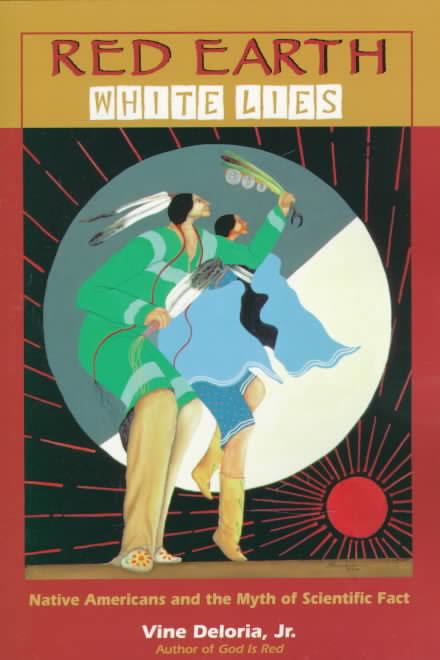Language English Publication date 1997-08-19 Pages 288 Genre Historical criticism | Publisher Fulcrum Publishing Media type Paperback Originally published 1995 Page count 288 Country United States of America | |
 | ||
Subject Creation beliefs of American Indians Similar Custer Died For Your Sins, God Is Red, Spirit and Reason, For this land, The metaphysics of moder | ||
Red Earth, White Lies: Native Americans and the Myth of Scientific Fact is a book by Native American author Vine Deloria, originally published in 1995. The book's central theme is to criticize the scientific consensus which has, in his words, created "a largely fictional scenario describing prehistoric North America".
Contents
Overview
Red Earth, White Lies particular focus is on criticism of current models of migration to the New World, in particular the Bering land bridge theory. Deloria attempts to expose fundamental weaknesses in this theory by detailing archeological inconsistencies and positing alternative hypotheses that he believes align better with existing archeological data. He argues that archeological evidence supports an earlier presence for indigenous peoples of the Americas than mainstream scientific models propose.
Deloria likens the dominant migration theory to "academic folklore" and contends that it is regularly cited as fact, but has not been critically examined even within the field of archeology.
Further, he charges that prevailing theories do not mesh with Native American oral traditions, which contain no accounts of inter-continental migration. He argues for a Young Earth with only one Ice Age, for a worldwide flood, and for the survival of dinosaurs into the 19th century.
In a similar vein, he criticizes the so-called "Overkill hypothesis", which suggests that humans migrating into the Americas are partially responsible, by overhunting, for the sudden and rapid extinction of North American megafauna during the Pleistocene epoch.
Deloria argues this view is racist, and that the Pleistocene extinction has no parallel on such a scale in Eurasia, which also experienced the sudden arrival of human hunters.
Criticism
John Whittaker, a Professor of Archeology at Grinnell College, referred to Deloria's "Red Earth White Lies" as "a wretched piece of Native American creationist claptrap that has all the flaws of the Biblical creationists he disdains...Deloria's style is drearily familiar to anyone who has read the Biblical creationist literature...At the core is a wishful attempt to discredit all science because some facts clash with belief systems. A few points will suffice to show how similar Deloria is to outspoken creationist author Duane Gish or any of his ilk."
Michael D. Gordin notes the book's close ties to Immanuel Velikovsky's cosmographical works, especially the revindication of oral myth and tradition as central to revising both history and myths' role in the study of history. Deloria had entered Velikovsky's circle in 1974, calling the psychologist "perhaps the greatest brain that our race has produced." Gordin concludes Deloria's rejection of the Bering land bridge and "attack on any affinity between Native tradition and Western culture and science" was derived from Velikovskian catastrophism, though Velikovsky himself rejected any hint of creationism.
